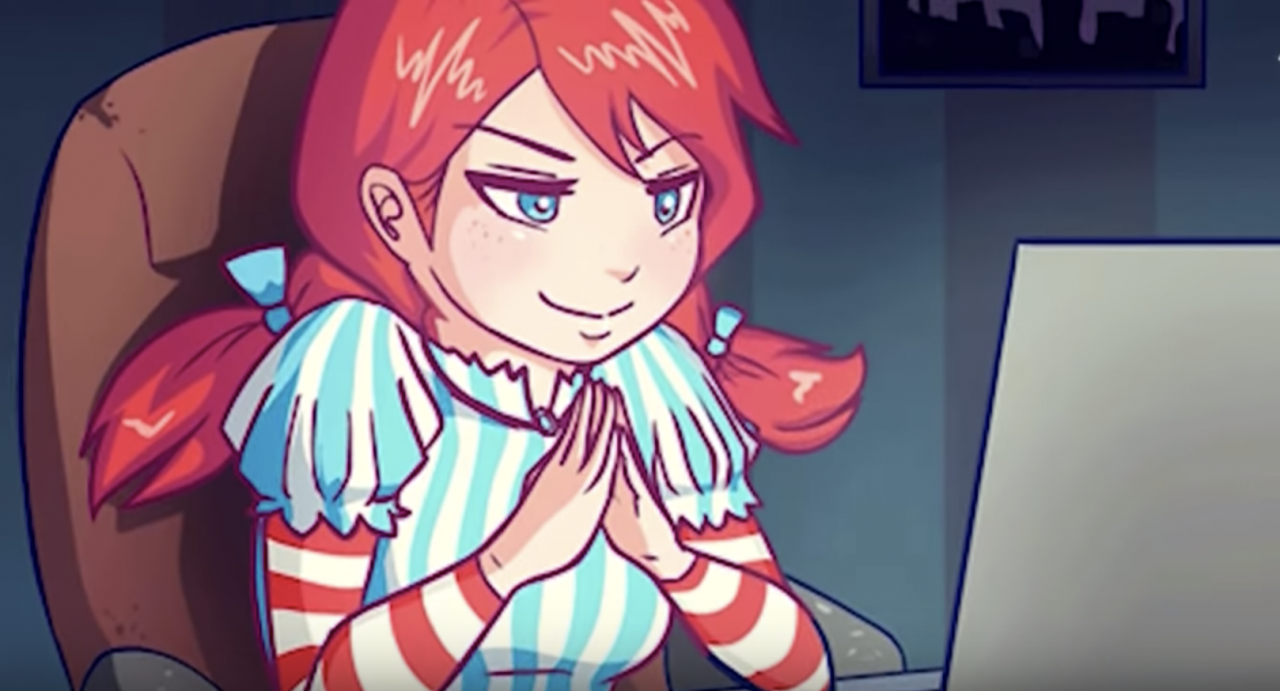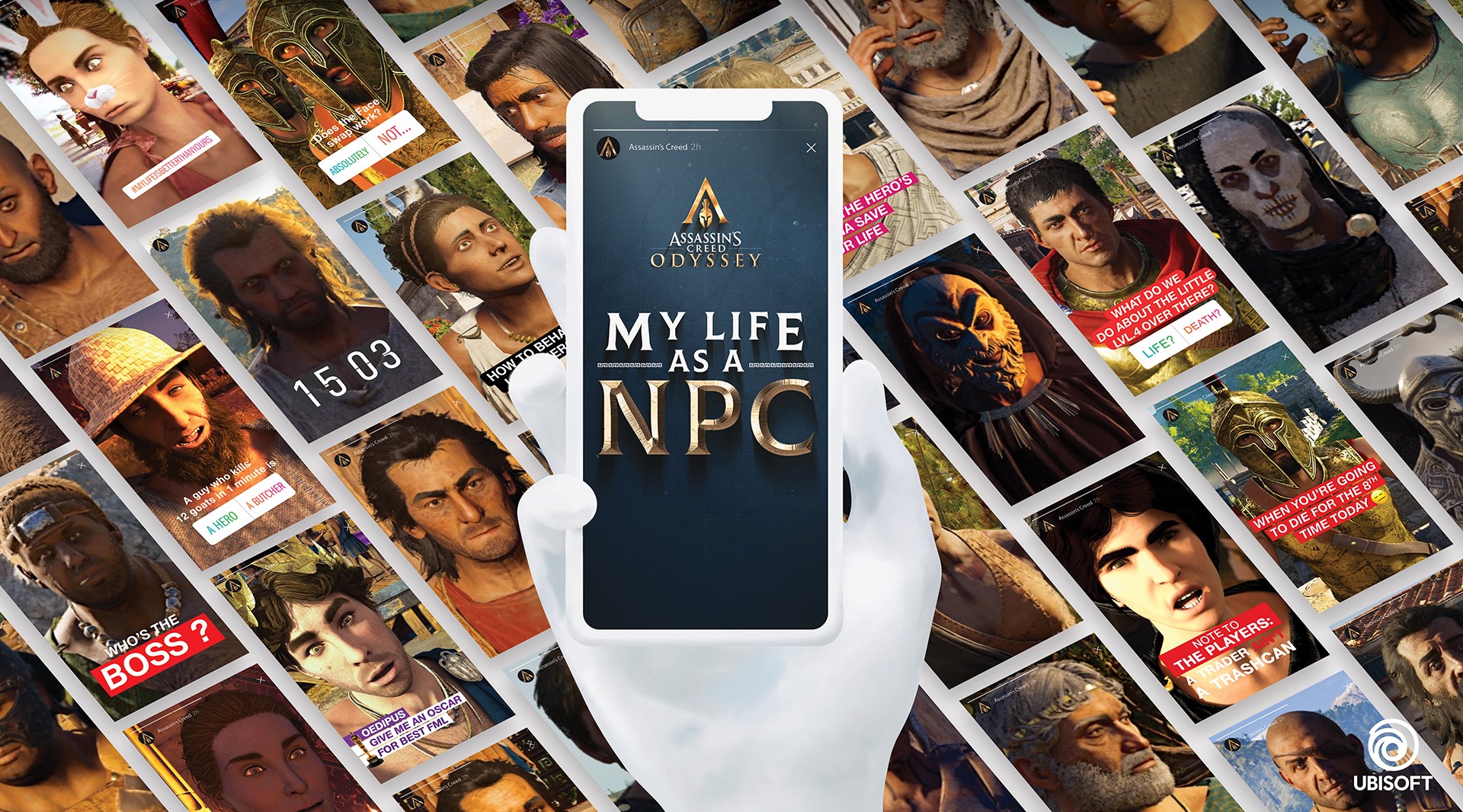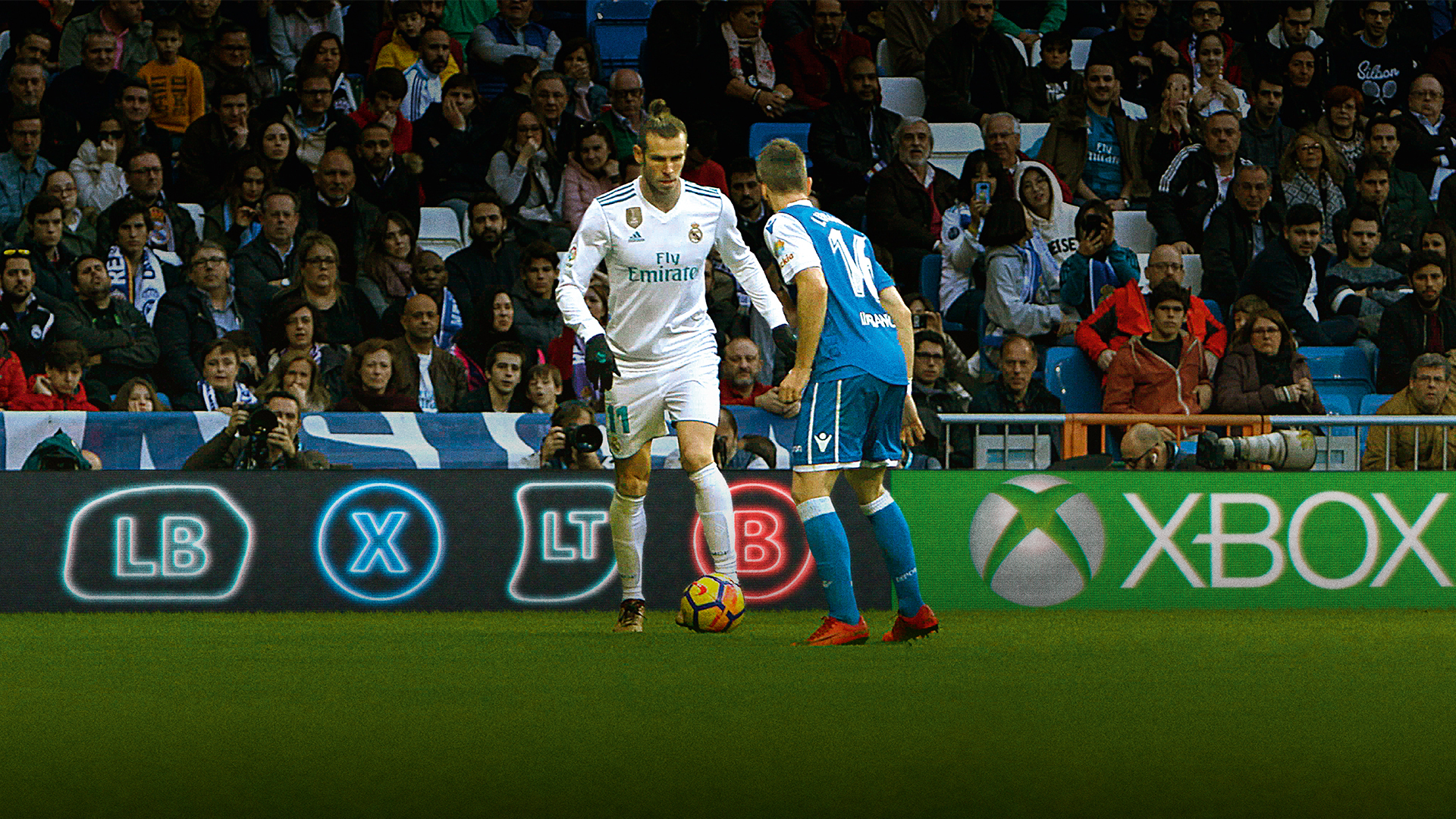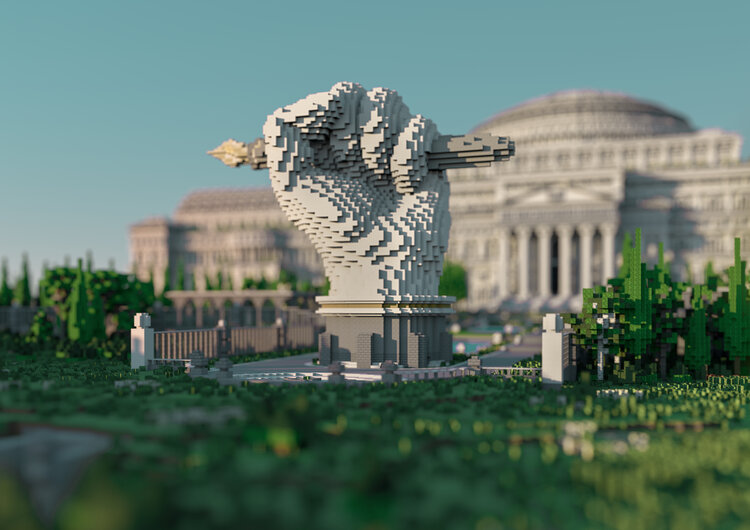PR / News
Lewis Tutssel EMEA Gaming Creative Strategist at Facebook: The Culture of Play
19 January 2021
LEWIS TUTSSEL
EMEA Gaming Creative Strategist, Facebook
Lewis Tutssel is the lead Gaming Creative Strategist for Facebook EMEA. Based in London he partners with the company’s largest and most dynamic clients to develop their integrated creative strategies and drive platform growth.
Lewis is a new breed of creative and a true left-brain right-brain thinker. On the right side, he is an award winning creative, building best-in-class work for some of the world’s most valuable brands such as Mars, Adidas, Heineken, McDonald’s, L’Oreal and Reckitt Benckiser. His recent contributions to ground-breaking work include Skittles “Broadway the Rainbow” and Libresse’s “Viva la Vulva”.
On the left side, he is a literal student of human behaviour, with a Masters in Behavioural Economics. If data is the new oil, then Lewis is the master refiner, combining his creativity and strategic nous to merge the realms of ideas and business.
In his time at Facebook Lewis has been responsible for the development of the Creative Shop’s Small Business and Gaming teams. Under Lewis’ leadership they have quickly grown from small practices, into global teams that have widened the lens of the company’s creative product. For Small Business, Lewis was the architect of ‘Mobile Studio’, a creative platform that empowered over 1 million small businesses to create brand level advertising using just their mobile phones, and allowing them to compete with some of the platforms largest and well-resourced brands.
Lewis has spoken and won awards at some of the most notable award shows in the industry including Cannes Lions, SXSW, AdAge, Campaign, Adweek, Club de Creativos and the ANDY Awards.
In his spare time Lewis is a highly accomplished musician, playing lead guitar for the band ‘Bear Season’, an avid gamer, competing in the top 500 global ‘Apex Legends’ players, and sportsman.
The Culture of Play
Observations and Opportunities for the Future of Gaming and Creativity
Whilst the global pandemic has negatively impacted almost every facet of the entertainment industry over the past year, the gaming industry has prospered. With the increased time at home, people have been turning to gaming as a means of escape, utility, entertainment, social connection, and more. It is no surprise then that in 2020, the global video game industry was bigger than the music and film industries combined.
People of all ages and demographics have engaged with video games the past year, contributing to the industry’s phenomenal growth across all platforms. Moreover, the launch of two highly anticipated next-gen consoles, Sony’s Playstation 5 and Microsoft’s Xbox Series X have only amplified people’s appetite for gaming.
With interest in gaming on the rise, the fast-growing industry is expected to reach $160 Billion in worldwide revenue in 2021. And will surpass $200 Billion by the end of 2023. Gaming, once perceived as a niche medium, has become mainstream. It is now a ubiquitous part of popular culture.
The human value that gaming creates in people’s lives is vital to brands. It’s an opportunity to create rich, immersive and interactive content that feeds people’s imagination and societies need to play.
This idea of ‘play’ is something that is familiar to all of us. As humans we have an innate love of it. It unites us across borders, generations, geographies and ethnicities. It has been a driving force in shaping culture and connecting with people throughout history. It seems unsurprising then that as we have been further away from each other physically, ‘play’ has been the vehicle that has brought us closer together digitally.
We as a creative industry have so much to learn from understanding gaming. From experience design to how we construct our own brand universes, I want to show how any brand can tap into the ‘Culture of Play’ to build meaningful work and innovative solutions for people. For when we stop looking at gaming as an industry, and more as a behaviour, it opens up the space for anyone to participate.
Gaming as a behaviour, not a vertical:
By understanding the ‘Culture of Play’ any brand can tap into gaming to build meaningful experiences for people.
Gaming has a perception problem. Historically a ‘gamer’ has been represented as a spotty nerd who sits in their parent’s dark and dingy basement playing countless hours of games with little exercise. As a result, many of us do not classify ourselves as one. This is certainly the case with my mother. She grew up playing board games, with a penchant for Scrabble. Now in her retirement, she relishes her days crammed with copious amounts of, as she puts it, “Scrabble on her phone”. Does she classify herself as a gamer? Absolutely not, because a gamer is clearly someone who sits at a console all day. But she is incorrect. In fact, she is a heavy mobile gamer, unwittingly expending countless hours playing ‘Words With Friends’, a popular title by game developer Zynga. This disconnect between the classification of a gamer and our own behaviour is something that has left many to view gaming through a biased lens, overlooking the immense opportunity it has to connect with people. And this really is a missed opportunity, as gaming has never been bigger. It has permeated culture, with roughly 2.6bn gamers globally. This is a number that is only going to grow. With the advent of 5G, cloud computing, virtual reality and the prevalence of mainstream E-sports, we expect to see an increase in ‘gamers’ in the coming years. Moreover, ‘gamers’ are incredibly sticky, for once you start, you rarely stop.
The scale of this opportunity has been a large driver of commercial interest from clients. Rarely does a day go by when I don’t hear “We need to connect with Gen Z. Can we do something with Fortnite?”. And whilst I love the intent, it marginalises the opportunity. For it is not about tapping into the gaming industry, or even a specific game. It is about tapping into the ‘Culture of Play’. Tapping into gaming as a human behaviour.
 I recently saw this video of a beluga whale playing fetch off of the coast of the South Pole. It resonated with me as it demonstrates that even remote mammals have a biological programming to enjoy games. This is true of humans too. We have an innate and intrinsic relationship with gaming. It is a behaviour that is built into all of us. A behaviour that when we harness it, provides real opportunity to build innovative creative work and connect with people in more meaningful ways.
I recently saw this video of a beluga whale playing fetch off of the coast of the South Pole. It resonated with me as it demonstrates that even remote mammals have a biological programming to enjoy games. This is true of humans too. We have an innate and intrinsic relationship with gaming. It is a behaviour that is built into all of us. A behaviour that when we harness it, provides real opportunity to build innovative creative work and connect with people in more meaningful ways.Building experiences, not ads:
Technology has opened new possibilities within game design. By understanding people and the game world, we can build experiences that add to it, not interrupt it.
Core gamers can be notoriously difficult to connect with as often they are playing within closed ecosystems that have no buyable media for brands. There are exceptions to this such as mobile games who offer formats such as banners, interstitials and rewarded video, but for the most part games are cordoned off from direct commercialism. This is because gamers care about experiences, not ads. Developers know that if external messages were allowed into their ecosystems, they would run the risk of detracting from people’s enjoyment. The question thus arises of how we build for this community. How do we even show up when there is no media space? If we do get there, what do we say? I believe that the answer lies in garnering a deeper understanding of the game worlds themselves, and the people who play them.
From a game design perspective, the goal of world-building is to create the context and foundation for a story. Traditionally this process has been heavily limited by technology. For instance, if you take some of the games that I grew up playing such as Crash Bandicoot or Tomb Raider, the character moves through a relatively fixed game world that allows for minimal interaction. This in part led to the prevalence of cinematic ‘game trailers’ within advertising. As we secretly knew the game was somewhat limited, thus we had to visually expand the world and oversell it to create a sense of awe in our audience. But we have come a long way in the past 20 years. Technology has now opened greater possibilities in terms of world building and game design, which in turn has opened new avenues of how we can connect with people. There are now MMORPG’s (massive multiplayer online roleplaying games) such as World of Warcraft, whose world of Azeroth has its own economy, history, culture, democracy, physics, languages and more. There are procedurally generated game worlds such as in ‘No Man’s Sky’, a game that generates 18 quintillion planets through mathematical modelling and AI that you can explore to find undiscovered flora, fauna and sentient alien species. There are games such as Minecraft where you can design and build your own world through voxel-based construction. There are iterative game worlds such as those in Fortnite, where the world changes after an extended period of time (a 10 week season) and allows players to interact with it in new and interesting ways. There are games that augment the real-world, such as Pokemon Go that leverages AR to allow people to explore their local areas in the hope of finding a Pokemon and catching it with their phone. The list goes on.
The point is that worlds are now incredibly complex and diverse ecosystems that are more immersiv e than ever. And in light of this, our advertising is following suit. As an industry we are building a deeper understanding of the respective game worlds and the people who spend time in them to build experiences that are additive. A case that does this well is for Wendy’s, who have found a way to become a part of the conversation in the absence of traditional media channels.
e than ever. And in light of this, our advertising is following suit. As an industry we are building a deeper understanding of the respective game worlds and the people who spend time in them to build experiences that are additive. A case that does this well is for Wendy’s, who have found a way to become a part of the conversation in the absence of traditional media channels.
 e than ever. And in light of this, our advertising is following suit. As an industry we are building a deeper understanding of the respective game worlds and the people who spend time in them to build experiences that are additive. A case that does this well is for Wendy’s, who have found a way to become a part of the conversation in the absence of traditional media channels.
e than ever. And in light of this, our advertising is following suit. As an industry we are building a deeper understanding of the respective game worlds and the people who spend time in them to build experiences that are additive. A case that does this well is for Wendy’s, who have found a way to become a part of the conversation in the absence of traditional media channels.What I love about this work is that it shows a deep understanding of the game and how it is played. Specifically, they have leveraged the game mechanics of destroying obstacles to their advantage, identifying that destroying fridges was a natural way to weave in the brand.
 We have also seen examples where brands have leveraged the understanding of the game and the community to build work around it, rather than within it. Two cases that do this well are ‘My Life as an NPC’ for Assassins Creed and ‘Football Decoded’ for the launch of Fifa 18. The gaming community has always had a love hate relationship with NPC’s (non-player characters), which has led to an array of humorous Youtube videos and skits throughout the years. What I love about the ‘My Life as an NPC’ is that it pays homage to that conversation. It knows that this relationship is important to the community and builds the idea out in an engaging and platform centric way.
We have also seen examples where brands have leveraged the understanding of the game and the community to build work around it, rather than within it. Two cases that do this well are ‘My Life as an NPC’ for Assassins Creed and ‘Football Decoded’ for the launch of Fifa 18. The gaming community has always had a love hate relationship with NPC’s (non-player characters), which has led to an array of humorous Youtube videos and skits throughout the years. What I love about the ‘My Life as an NPC’ is that it pays homage to that conversation. It knows that this relationship is important to the community and builds the idea out in an engaging and platform centric way. For Xbox, they had the challenge of not being able to show the game, thus circumventing it through the controls of the game itself, and in turn, the lexicon and behaviour of the gamers who play it. The content even provides utility to the players beyond the ads, as by watching them you may learn some new moves that you could then use in the game itself.
For Xbox, they had the challenge of not being able to show the game, thus circumventing it through the controls of the game itself, and in turn, the lexicon and behaviour of the gamers who play it. The content even provides utility to the players beyond the ads, as by watching them you may learn some new moves that you could then use in the game itself.As demonstrated here, the opportunity to understand games and their worlds is something that all advertisers must embrace if we are to go deep with them as marketing mediums.
From the game universe, to the real universe:
By understanding how we design alternate realities it is possible to craft a more meaningful reality.
We have explored how we can better understand games and the gaming community to build more meaningful experiences. I now want to focus on what we can learn from games, and the positive implications they may have in helping us navigate the real world.
Although not one myself, I would posit that most parents are happy for their child to spend 5 hours reading a book or doing a sudoku. It is seen as productive, because the assumption is made that the child is learning. But when it comes to spending 5 hours at the computer playing a game, our opinions drastically change. “It’s a waste of time”, “they should be outside socialising”, “they are not learning” and so on and so forth. But let me assure you that most games offer tremendous benefits to the player. Games by definition have four key elements. They have a goal, a rule set, feedback mechanisms and require voluntary participation. When you put all of these together you see that games are often voluntary attempts to overcome unnecessary obstacles. People are actively willing to take on challenges, which at times can seem like real work. The issue however arises when we see that people are more active in taking on these obstacles in a virtual world, rather than the real one. This amongst other things has led to animosity around time spent playing games, for there is a fundamental belief that reality is better. But is it?
Game developers are master engineers of happiness and psychology. They design their products to drive intrinsic rewards for the player. The rewards you receive are often directly linked to the effort you exert. This gives people a sense of progression. They are designed so that the more you play, the better you become and the more you achieve. I am not sure we can say the same from everyday life. It is perfectly plausible that we can work 9-5 and get nowhere. Your effort can be miscredited. Your work stolen. It is too naïve to simply assume reality is better, and instead, we should start learning from games to help find fixes for it.
There is also room for brands to learn from games. As previously mentioned, game universes now have more technological capabilities than ever, affording players new ways of participating and connecting. In short, great games provide people with a platform. A platform that they can define and personalise to shape their own experiences. This is true of great brands too. If we take Nike for example, they provide people the platform to enable their inner athlete. They have their own culture, language, and a clear identity. We thus have the opportunity for all clients to explore how we can learn from game universes to better define the universe of the brand.
On the topic of Nike, I have been fascinated by the psychology of sneaker drops, which are designed to create buzz through gamifying new releases. As you know, an exclusive shoe is not easy to get. The competition is fierce and is designed in such a way whereby you only really win when someone else loses. To me, this is classic game design that is manifesting itself in the physical world. Game developers often employ specific win loss schedules within their games that seek to invoke peoples reward systems. In short, they manage how much you win and lose. When playing a Battle Royale game such as Fortnite, it is designed in such a way that you will win a small yet set percentage of the time. The key is to ensure that players win with just a high enough frequency that they don’t lose interest, but a low enough frequency that it feels like a big deal when they do. They do this through something called a skill-based matchmaking system, where their algorithm matches you against the perfect set of players to allow for their defined probabilities to come to fruition. They control how you win, and how you lose. This is similar to sneaker drops. It is no coincidence that some are easy to obtain, and some are not. They have tapped into gaming as a behaviour to drive demand around new releases. It is the psychology of game design at work, and we are suckers for it. This is one small example, but again it shows how we can think of gaming not as a vertical, but as a behaviour. By gamifying our brands and experiences we can create deeper engagement and brand love.
Gaming for Good:
Gameplay is not just a pastime. By embracing the ‘Culture of Play’ we can impact real-world change.
Despite often receiving a negative press, gaming has the profound ability to drive positive impact in the real world. Throughout history games have proven successful in organising large groups of people, removing isolated ideology and directing our collective attention to larger social and economic change. This ability can be traced back as early as the 2nd millennium BC to the ancient Greeks, and in particular to King Atys of Lydia’s story highlighted by Jane McGonigal in her book ‘Reality is Broken’.
King Atys was faced with a conundrum. He had too little food to feed his kingdom. If he did not concoct a solution, then his people would surely perish. His ingenious idea however, was that people would eat every other day, playing games on the days between to stave off their hunger. He believed that games were entertaining enough to override our biological needs and secure the safety of his people. He was right, and it transpired that this mechanism would be utilised by the ancient Lydians for the next 18 years, inventing items such as dice and the ball along the way. After all, playing the same game every day may get boring. For the ancient Greeks, games saved many lives. Although in the end it transpired that an even better solution was to banish half of the kingdom, c’est la vie, but it depicts the power that games have in changing behaviour to affect real-world change.
The aforementioned requires collaboration. And luckily games are all about collaboration. When you play Tic-Tac-Toe, you and your opponent, despite in direct competition, have to collaborate to even play the game, agreeing on the rules and the fact that you will both try as hard as possible in the allotted time. When a new game is released, the community come together to take on challenges, solve quests, and ultimately publish huge Wikipedias to help the community. Take a look at the size of the World of Warcraft Wiki if you don’t believe me. When games have reached their lifecycle, gamers will collaborate to define new goals and challenges that they can tackle as a community. For instance, Halo 3 players came together to kill 10 billion alien enemies within the game. Why? Because gamers love a challenge. Through their collaboration they attach themselves to larger entities, and drive change. Change that is sometimes trivial, and sometimes not. This willingness to collaborate sets gamers apart from others. They are happy to take on unnecessary obstacles, and when their effort is channelled into something meaningful, we have the opportunity to drive real impact at scale. That is the opportunity for brands and gamers.
I wanted to include an example here of an idea and campaign that I believe demonstrates how we can harness games for good.
 The Uncensored Library - This work was recently undertaken by DDB, Reporters Without Borders and Blockworks. It comes in the wake of mass censorship within the media. Many of us are fortunate enough to not have our media heavily censored, but not everyone is so lucky. So how do we overcome the barrier of the removal of the truth? In this case they turned to Minecraft, a world building game that not only has become a global phenomenon, but a game that has also become a safe channel of communication in markets facing heavy censorship. They thus decided within this virtual world to build the ‘Uncensored Library’, a physical installation of enormous scale that housed hundreds of censored books and articles. This world was available for anyone to access, with the information readily available. What I love about this idea is not only that it gives a secure platform for information and freedom of speech, but that it weaves the virtual world into the real to drive change.
The Uncensored Library - This work was recently undertaken by DDB, Reporters Without Borders and Blockworks. It comes in the wake of mass censorship within the media. Many of us are fortunate enough to not have our media heavily censored, but not everyone is so lucky. So how do we overcome the barrier of the removal of the truth? In this case they turned to Minecraft, a world building game that not only has become a global phenomenon, but a game that has also become a safe channel of communication in markets facing heavy censorship. They thus decided within this virtual world to build the ‘Uncensored Library’, a physical installation of enormous scale that housed hundreds of censored books and articles. This world was available for anyone to access, with the information readily available. What I love about this idea is not only that it gives a secure platform for information and freedom of speech, but that it weaves the virtual world into the real to drive change.The Uncensored Library demonstrates that gaming can be a driver of good in an incredibly profound sense. But it doesn’t always have to be profound. Good can be driven in small increments. Recently Pokemon Go released a new update that players could only unlock after they had walked 5km. This albeit is a mechanic of the game itself, but it got people out of their houses and benefited their life in a way that would not have happened if they weren’t playing a game.
The symbiotic relationship between advertising and gaming:
Throughout the years gaming has given so much to advertising. What will advertising give back to gaming?
When we think about gaming advertising, most our minds often wander to pieces of work such as Playstation: Double Life. And why wouldn’t they, it is one of the greats. But gaming hasn’t just given the ad industry console ads. It has afforded us both gamified mechanics and technology that allow us to better connect with people.
Imbedding gaming into brand communication has been a staple for years. An example I love is from Google.
In 2004, a billboard popped up on Highway 101 in Silicon Valley, asking people to solve it. Upon finding the solution (7427466391.com) people were led to a website to solve another puzzle, landing people an interview at Google's headquarters. This is a simple example, but it shows how we can tap into the ‘Culture of Play’ to gamify recruitment, whilst also reinforcing Google’s hiring criteria - the best of the best.
There are of course countless examples of ads that leveraged the ‘Culture of Play’ over the past decades to drive more engaging and meaningful connections between brands and people. What is exciting to us now as a creative industry is that thanks to technology, we have more ways than ever to create these types of ideas and connections.
Brands often plug into their audience’s culture, and simply regurgitate it, playing it back to them. But to get people to buy into brands, we need to unite speed, progressive thinking, and culture, to create brave ideas that feed our society’s need for engaging and rewarding content. Gaming is all about this type of content, and what we can learn from it could be the answer.
By tapping into the “Culture of Play” we have a tremendous opportunity to do good in the world, create truly interactive experiences, and find new and innovative ways to connect with people that weave brands into the fabric of life.
And to me that’s pretty exciting.
Game on.
